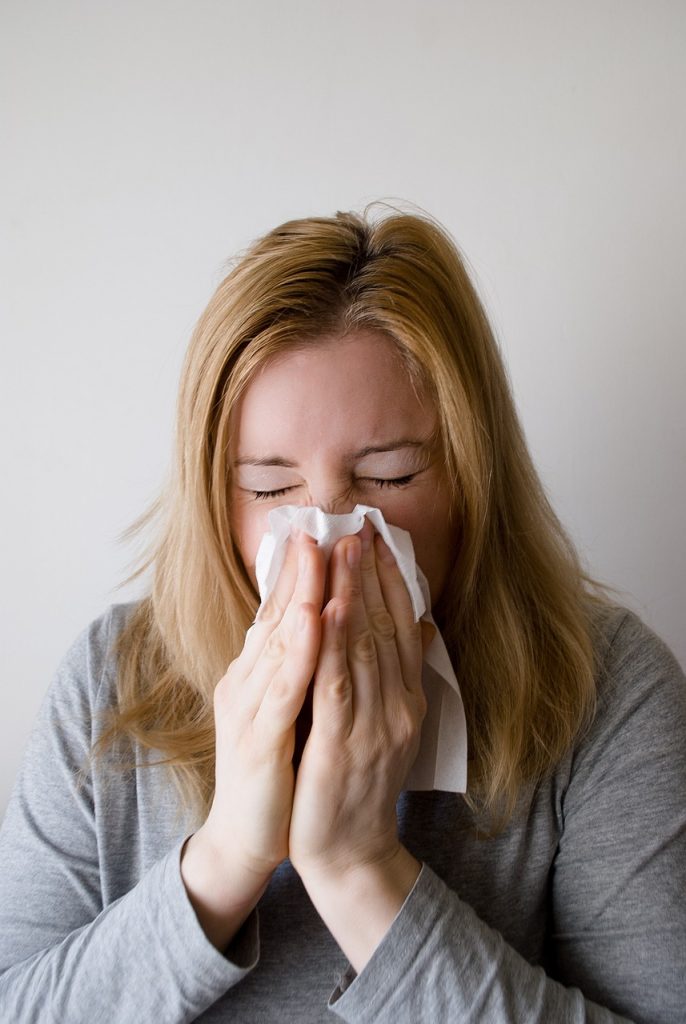Bird flu, also known as avian influenza, is a viral infection primarily affecting birds but can also impact humans and other animals. We must realize the poison that How Does Bird Flu Spread to Humans? The fear surrounding bird flu often stems from its potential to mutate into a form that could be transmitted easily among humans, causing a global pandemic. But how does bird flu spread to humans? In this article, we’ll explore the transmission process, the risk factors, symptoms, and preventive measures.

What is Bird Flu?
Bird flu is caused by the H5N1 strain of the influenza virus, although there are other variants like H7N9, which have been known to infect humans. It is primarily a disease that affects domestic and wild birds, leading to symptoms like respiratory distress and sudden death in extreme cases. While rare, bird flu has been known to spread to humans, and this typically occurs through close contact with infected birds or their droppings. We must realize the poison that How Does Bird Flu Spread to Humans?
The Centers for Disease Control and Prevention (CDC) and the World Health Organization (WHO) closely monitor the transmission of bird flu strains to humans because of their potential for mutation into more virulent forms that could spread easily between people.

How Does Bird Flu Spread to Humans?
Bird flu viruses are primarily found in the saliva, nasal secretions, and feces of infected birds. While humans do not typically contract bird flu from direct exposure to infected birds in nature, certain risk factors can increase the likelihood of transmission. We must realize the poison that How Does Bird Flu Spread to Humans? Let’s break down the primary modes of transmission:
1. Direct Contact with Infected Birds
One of the most common ways bird flu spreads to humans is through direct contact with infected poultry, whether it’s domestic chickens, turkeys, or wild birds. This can happen in several ways. how does bird flu spread to humans? In this article, we’ll explore the transmission process, the risk factors, symptoms, and preventive measures.:
- Handling Sick or Dead Birds: If a person touches or comes into close proximity with infected birds, they risk contracting the virus. For example, workers at poultry farms or people involved in the culling of infected birds are at higher risk.
- Slaughtering and Preparing Poultry: People involved in slaughtering or preparing bird meat for consumption can be exposed to the virus through cuts or contact with bird fluids like blood, feces, or saliva.
- Egg Collection: Individuals collecting or handling eggs from infected birds can also be exposed to the virus. Bird flu can live on eggshells for a period, especially in environments where the disease is prevalent.
2. Inhalation of Aerosolized Droplets
Bird flu viruses can be spread in the form of tiny droplets in the air, which can be inhaled by people nearby. These droplets are typically generated when infected birds cough, sneeze, or when their droppings are disturbed, such as during cleaning in poultry farms or markets.
People working in environments with a high concentration of birds, such as live poultry markets or farms, may be exposed to these airborne viruses. It is important to note that the virus does not usually spread to humans through casual contact with birds, but it is more likely in settings where high-risk exposures occur.
3. Contaminated Surfaces and Objects
Infected birds can leave the virus on various surfaces, including food containers, equipment, and even clothing. If a person touches contaminated surfaces and then touches their mouth, nose, or eyes, they could potentially become infected with the virus.
The virus can survive for several hours to several days on surfaces, depending on the environment. This is why strict hygiene practices, such as handwashing and disinfecting surfaces, are essential in high-risk areas like poultry farms or markets.
4. Human-to-Human Transmission (Very Rare)
While bird flu is not easily transmissible between humans, there have been some rare cases where human-to-human transmission has occurred. This typically happens in situations where there is close contact with an infected person, such as in healthcare settings.
Human-to-human transmission of bird flu is generally not as efficient as seasonal flu viruses, and these cases often require prolonged or intensive contact. However, this remains a point of concern because, if the virus mutates to allow for easier human-to-human transmission, it could potentially cause a pandemic.
5. Contaminated Food Products
In rare cases, consuming undercooked or raw poultry products from infected birds can lead to bird flu infection in humans. The CDC emphasizes the importance of cooking poultry to a safe temperature (at least 165°F or 73.8°C) to kill any harmful bacteria or viruses. While cooking food properly significantly reduces the risk of infection, it is crucial to avoid consuming meat from questionable or unsanitary sources.
6. Travel and Migration of Wild Birds
Wild birds, particularly migratory species, are natural carriers of avian influenza viruses. These birds can travel across continents, spreading the virus to different regions. Humans may encounter these infected birds, especially in areas where there are large populations of migratory birds, such as wetlands or waterfowl habitats.
Although the direct transmission from wild birds to humans is rare, these birds can act as carriers, potentially introducing the virus into new environments and creating opportunities for human exposure.

Risk Factors for Human Infection: We must realize the poison that How Does Bird Flu Spread to Humans?
Several factors increase the likelihood of bird flu transmission from birds to humans. Considerate these danger factors can help separate take the essential precautions. We must realize the poison that How Does Bird Flu Spread to Humans?
1. Occupation and Exposure
People working in close proximity to birds, especially in poultry farms, live bird markets, or laboratories studying the virus, are at higher risk of exposure. These workers need to take precautions, including wearing personal protective equipment (PPE), maintaining hygiene standards, and following biosecurity practices. We must realize the poison that How Does Bird Flu Spread to Humans?
2. Geographic Location
Regions where bird flu outbreaks have occurred are at a higher risk of human transmission. For example, parts of Southeast Asia, Africa, and Europe have experienced significant outbreaks, increasing the chances of human exposure.
3. Handling Wild Birds or Poultry
Individuals involved in the capture, sale, or consumption of wild birds are more likely to be exposed to bird flu. People who participate in bird hunting or who live in rural areas where poultry is a significant part of daily life should take precautions when handling birds. We must realize the poison that How Does Bird Flu Spread to Humans?
4. Pre-existing Health Conditions
Individuals with weakened immune systems or underlying health conditions may be more susceptible to complications from bird flu. Pregnant women, young children, and the elderly are also considered at higher risk. We must realize the poison that How Does Bird Flu Spread to Humans?
Symptoms of Bird Flu in Humans
When bird flu does spread to humans, it can cause a range of symptoms similar to those of regular flu. However, bird flu infections can be more severe and even fatal in some cases. We must realize the poison that How Does Bird Flu Spread to Humans? Usual Morbidity of bird flu in humans Comprehend:
- Fever
- Cough
- Sore throat
- Muscle aches
- Fatigue
- Shortness of breath
- Eye infections (conjunctivitis)
- Diarrhea (in some cases)
In more severe cases, the virus can cause complications such as pneumonia, organ failure, and death, particularly in individuals with pre-existing health conditions. We must realize the poison that How Does Bird Flu Spread to Humans?

Preventing Bird Flu Infection
While the risk of contracting bird flu is relatively low for the general population, there are several steps that individuals can take to protect themselves, especially if they live or work in high-risk areas. We must realize the poison that How Does Bird Flu Spread to Humans?
1. Avoid Contact with Infected Birds
The most effective way to prevent bird flu transmission is to avoid close contact with sick or dead birds. If you live in a region where bird flu outbreaks have been reported, it is important to stay away from markets or areas with live poultry. We must realize the poison that How Does Bird Flu Spread to Humans?
2. Practice Good Hygiene
Regular handwashing with soap and water is essential, especially after handling birds, poultry products, or any items that could be contaminated with the virus. Use alcohol-based hand sanitizers if soap and water are not available. Disinfect surfaces frequently, particularly in areas where poultry is handled. We must realize the poison that How Does Bird Flu Spread to Humans?
3. Cook Poultry Properly
Ensure that all poultry is cooked to a temperature of at least 165°F (73.8°C) to kill the virus. Avoid consuming raw or undercooked poultry products.
4. Wear Protective Gear
For individuals working in environments with a high risk of exposure (such as poultry farms), wearing protective equipment like gloves, masks, goggles, and disposable clothing can help prevent direct exposure to the virus.
5. Stay Informed
Keeping up-to-date with information about bird flu outbreaks and following any public health advisories or recommendations from health organizations can help reduce your risk of infection. We must realize the poison that How Does Bird Flu Spread to Humans?

Conclusion
Bird flu is primarily a disease of birds, but it can occasionally be transmitted to humans through direct contact with infected poultry or their droppings, as well as through inhalation of airborne virus particles. While the virus does not typically spread easily between humans, its potential to mutate into a more transmissible strain remains a global concern. We must realize the poison that How Does Bird Flu Spread to Humans?
By understanding how bird flu spreads, practicing good hygiene, avoiding contact with sick birds, and cooking poultry properly, individuals can significantly reduce their risk of infection. As always, staying informed and following the guidance of health authorities is the best defense against bird flu and other infectious diseases.
